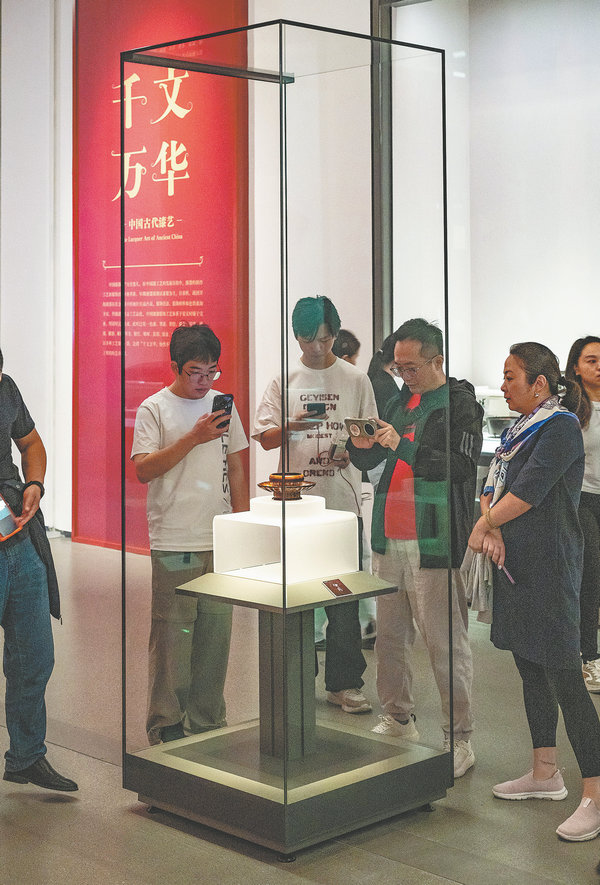

"It represents the pinnacle of carved lacquer craftsmanship during that era. Works by Zhang Cheng are extremely rare worldwide," says Yu Peiyao from the Hubei Provincial Museum.
Kuancai, which literally means engraved polychrome, is a technique where designs are first carved into the smooth lacquer surface and then filled with colored pigments. Originating in and flourishing during the late Ming and Qing dynasties, it was mainly used to decorate large screens and exported to Europe from the 17th century.
To this day, the term "Coromandel" is still used to describe kuancai, as people in the West once mistakenly believed the Indian coast of the same name was the origin of these decorative pieces.
"With its elaborate and luxurious aesthetic, kuancai was favored not only by members of the upper class in China but also by European royals and elites. The Europeans valued it because it could partition spaces and be integrated as an exquisite decorative element into their houses," she says. "This popularity contributed to the chinoiserie trend that emerged during the 17th century in Europe and surged across the continent in the 18th century."
According to her, Chinese lacquerware techniques had spread to the Korean Peninsula as early as the Qin and Han dynasties. By the Sui (581-618) and Tang (618-907) dynasties, these techniques further spread to Japan, inspiring the creation and development of Japan's renowned maki-e, a refined decorative technique using lacquer.